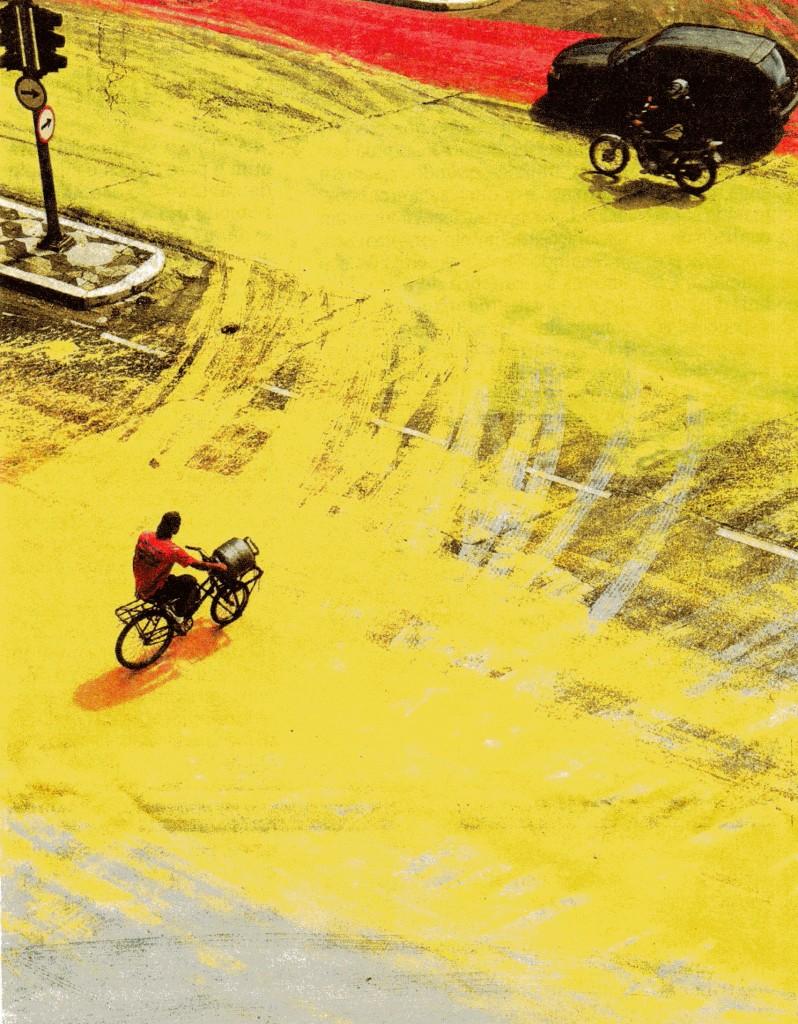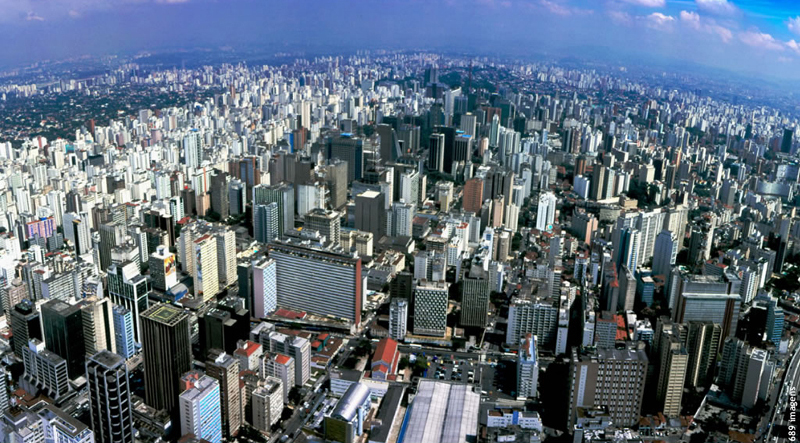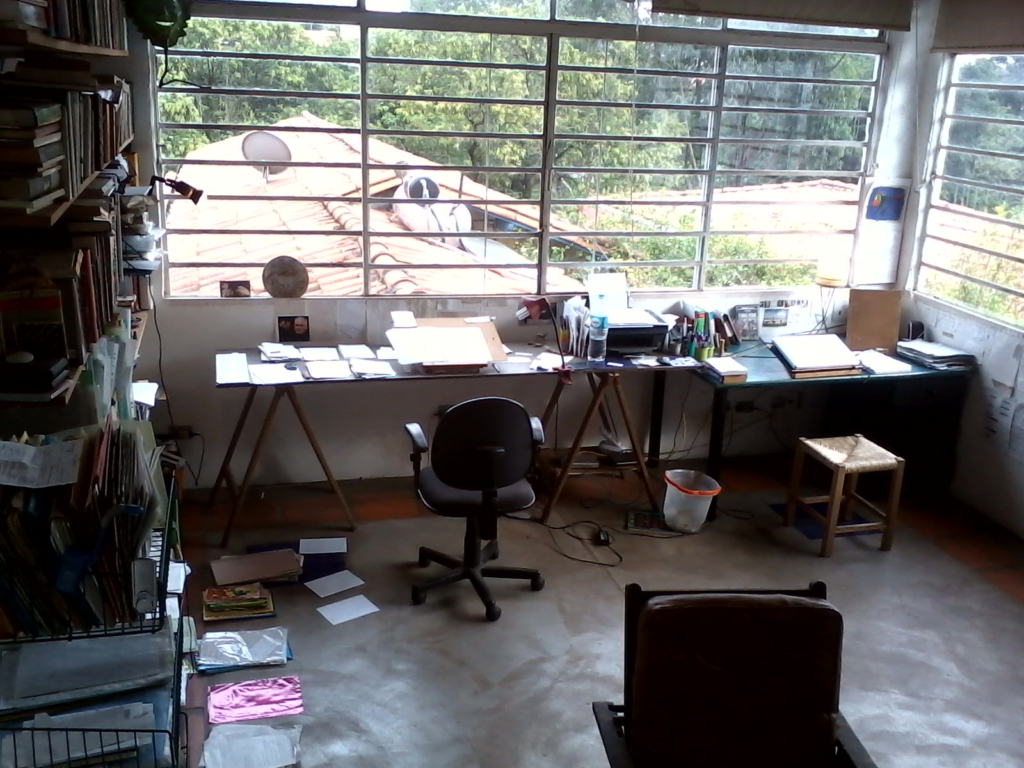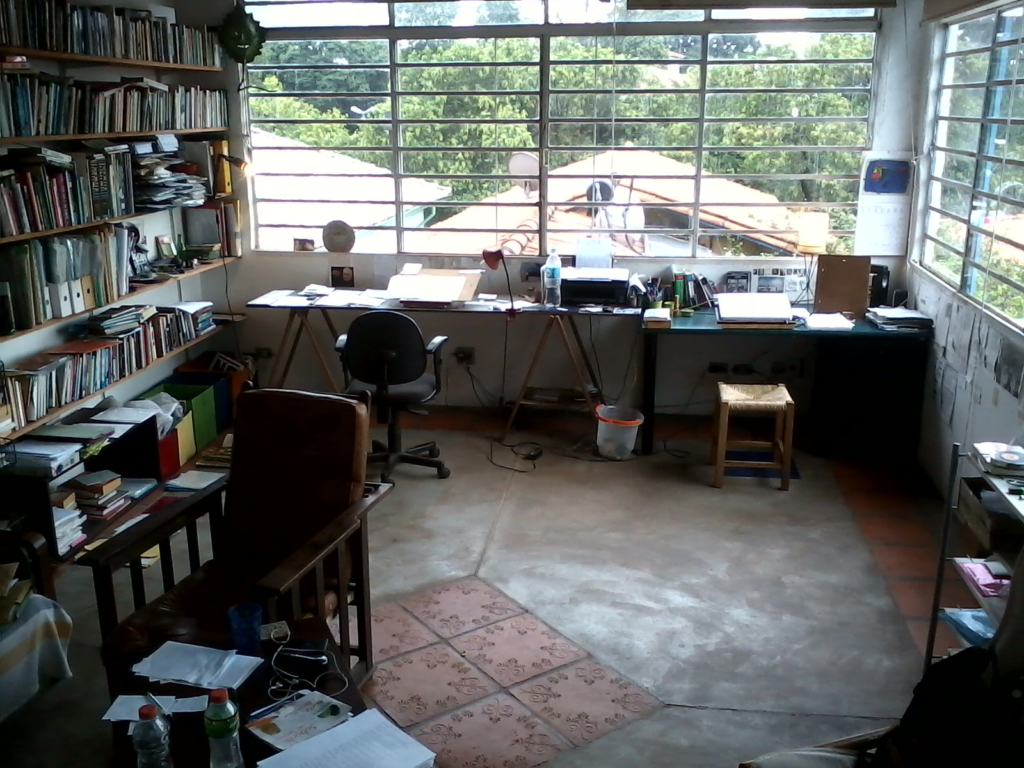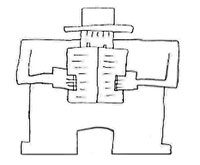TO END THE YEAR...
A thought from the British author, Philip Pullman: “Thou shalt not is soon forgotten, but Once upon a time lasts forever.”
Nasruddin and the traveller...
One day Nasruddin saw a man walking along the road. He had a heavy bag and was looking gloomy.
Nasruddin called out to the traveller, “What’s making you so miserable?”
“I’m on a trip to seek happiness,” the man told him. “And I’ve travelled far and wide, but I’ve not been able to find out how happiness is produced.”
Without another word, Nasruddin grabbed the traveller’s bag and he ran away with it. Off he went down the road, as fast as a rabbit. Then, round a bend, Nasruddin darted out of sight into some undergrowth.
The traveller, who did not know the area so well, just carried along up the road. And he looked even more unhappy, now that his bag had been stolen.
Nasruddin took a shortcut and reached the road a good bit further along. Then he put down the bag and waited.
Presently the traveller appeared. He saw his bag. He ran towards it. And, when he realised it hadn’t been stolen after all, he picked it up and shouted with joy.
“There you are,” said Nasruddin. “That’s one way of producing happiness.”
SMILE, YOU'RE BEING EDUCATED!
A school in São Paulo, Brazil, where I live at the moment, recently caused a stir by installing security cameras in all of its classrooms.
The students at Rio Branco (a well-known, private secondary school) were not told about this. They arrived one morning and found the CCTV cameras staring down from the ceilings. It provoked a student walk-out which led to the suspension of 107 pupils. And this has started a debate between people who think security cameras in school classrooms are a good idea and people who don’t.
The argument in favour tends to be that classroom cameras improve behaviour and offer security to students and teachers. “The walls of the classrooms are cleaner, and the teenagers are much better behaved,” says Débora Goulart, Head Teacher of another Brazilian school with classroom cameras. And the mother of a pupil asks, “What goes on in lessons that people don’t want recorded? If you’re doing nothing wrong you have nothing to fear!”
Disruptive behaviour in classrooms is a problem. And there are cases where CCTV camera footage has cleared up difficult disputes. (In Britain, where I’m from, there was a case of a boy who claimed to have been dragged from a classroom by his teacher. He used marks on his arms as evidence. But CCTV footage showed he was lying. It proved there was no contact between the teacher and the boy, and showed that he asked a friend to punch his arms to make the marks.) All the same, I have some questions for those in a hurry to put these cameras into classrooms.
Firstly, how much difference do they really make? Isn’t it a bit naïve to think that pupils who have behavioural problems are going to leave them behind just because they are being filmed? How good is good behaviour if it is just in response to a camera on a wall? And won’t bullies and others who behave badly in schools just find ways to carry on, out of sight from the cameras?
Secondly, aren’t those who are in favour of the cameras so fixed on the bad things they may prevent that they’re forgetting the good things that they may be preventing as well?
If a school puts cameras into classrooms it seems like an admission that there is something profoundly wrong with the relationships between its teachers and its pupils. Either some teachers are not managing to engage pupils effectively, or some students seriously lack faith in their teachers. (Or both.)
Are classroom cameras going to do anything to improve these relationships? And shouldn’t the school be looking to do that before anything else? After all, it is those relationships between teachers and pupils that are the very life-source of learning in schools.
If something is profoundly wrong then it demands a profound course of action. But that’s not what putting in security cameras is. It’s too easy. It’s too much like papering over the cracks.
The whole story of the cameras at Rio Branco (including the way they were installed without a word to pupils) suggests that the school is sidestepping more time-consuming and demanding ways of facing its difficulties: through human exchange, honest conversation, listening, reflection, dialogue, negotiated deals. Instead it has opted for a technological quick-fix.
What do you think? Please comment if you have thoughts on the subject. Cameras in classrooms are by no means limited to Brazil. They are increasingly used in countries around the world.
And what comes next? Computer chips sewn into uniforms to monitor where pupils are?
Well, actually, the day before yesterday I read an article in the Brazilian press, reporting that a school near to the capital, Brasília, is doing exactly that. Pupils have to wear uniforms with chips sewn in which track where they are. And other schools are already expressing an interest in the idea…
Three sayings from Afghanistan
‘Two watermelons cannot be held in one hand.’
‘What is the trumpet player’s job? To blow.’
‘They asked the fox, “Who is your witness?” He replied, “My tail.”’
(Image from a picture book – one of my favourites – called BEN’S TRUMPET, written and illustrated by Rachel Isadora, published by Greenwillow Books back in 1979 and still in print. You can hear it read here.)
I'LL SEND MY EYES...
A few years ago, I led a creative writing course at HM Prison Rochester, in the south of England.
A group of twelve or fourteen prisoners, aged 18 to 21, took part. We worked for a couple of hours every morning, round a big table at the back of the prison chapel. The project led to the publication of a book of poems by the prisoners. They put on a performance to other inmates. And I remember the courage, humour and honesty of the men who stood up to read their poems cutting right through the restlessness of some in the audience who had come along thinking their poetry might be a bit of a joke.
So by the end, it felt like quite a successful project. And I remember the very beginning being important.
I wanted to find a way for everyone taking part to introduce themselves, while knowing that young men in prison might not want to say anything too personal. So I suggested a sort of game.
I said we were going to send a rocket into space, and asked the prisoners to think of one thing each, to put on the rocket to represent themselves.
I started. I told them I’d put a leaf from the oak tree behind the house where I grew up. And the man next to me got the idea straight off. He said, “I’ll send my eyes…because when you’re in prison they’re the most precious thing you’ve got.”
After that, hardly anyone hesitated before choosing something to put on the rocket.
“I’m going to send the spikes off my running shoes because when I was sixteen I was the best sprinter in my school.”
“I’ll put a photograph of my son.”
“I play music and I’ve recorded stuff. So I’ll send a CD of my songs.”
The game worked. Everyone used it to say something with some truth in it.
Then it came to the last prisoner in the circle – quite a pale man, a bit smaller than the others. And he said, “My name is Sten, from Estonia. I am five months in this country and five months in prison. What I will put in this rocket is MYSELF. Then it will be a good way to get out of this prison!”
Nine writers talking about poetry
Stephen Spender: “Great poetry is always written by somebody straining to go beyond what he can do.”
Benjamin Zephaniah: “I would say that the poet’s role was to question things in an accessible way and to raise people’s spirits.”
Les Murray: “My poetry is like a rope in a shipwreck.”
Rubem Alves: “Poetry: this desperate attempt to say what cannot be said.”
Martín Prechtel: “Poetry is the most honey-tasting form of subversion.”
Robert Frost: “It begins in delight, it inclines to the impulse, it assumes direction with the first line laid down, it runs a course of lucky events, and ends in a clarification of life – not necessarily a great clarification, such as sects and cults are founded on, but in a momentary stay against confusion.”
Pablo Neruda: “Poetry…has a cat’s nine lives. They harass it, they drag it through the streets, they spit on it and make it the butt of their jokes, they try to strangle it, drive it into exile, throw it into prison, pump lead into it, and it survives every attempt with a clear face and a smile as bright as grains of rice.”
Adrian Mitchell: “I write my poems for love – love of language, love of my family, friends and animals, love of the planet, love of life, and I’d be a damned fool if I didn’t.”
Dylan Thomas: “Poetry is what…makes my toenails twinkle…”
Writing secrets - PLAYFULNESS
You want readers to enjoy what you write, so it probably helps if you enjoy doing the writing.
If you look at children playing, they seem very absorbed in what they’re doing, but it’s light rather than serious, and they’re having fun.
I like to start writing in that spirit.
If I manage to get going in a playful way – absorbed but free to try this and that, not taking it so seriously, and having fun – it’s often the beginning of a good day’s work.
Sometimes I write well at the weekend, when things are more relaxed all around and there’s less expectation to get something done.
It’s something described better than I’ll manage by the Nigerian writer Ben Okri in a book of essays published back in 1997 called A WAY OF BEING FREE. In one of the essays, called NEWTON’S CHILD, he says:
Creativity, it would appear, should be approached in the spirit of play, of foreplay, of dalliance, doodling, messing around – and then, bit by bit, you somehow get deeper into the matter. But if you go in there with a businessman’s solemnity or the fanaticism of some artistic types you are likely to be rewarded with a stiff response, a joyless dribble, strained originality, ideas that come out all strapped up and strangled by too much effort… Do not disdain the idle, strange, ordinary, nonsensical, or shocking thoughts which the mind throws up. Hold them. Look at them. Play with them. See where they lead.
INSPIRATION...Helen Taylor
My mother, Helen Taylor, is an amazing woman. She turns 80 today. There are many things I love about her, and many things I owe to her.
As a younger woman she was a music teacher. So she encouraged me to try out playing instruments and to sing and to listen to music. Until today I love doing all three (though I should admit I’m best at the third one by quite a long way!) And I’m sure that the grounding in music she encouraged me to get feeds into my writing today.
Listening to music helps me when I’m writing. I find different sorts of music boost me in different sorts of ways. And there are the things that you learn about from music too – rhythm, harmony, dissonance, silence, beginnings, endings. All these will feed into just about any kind of art work I can think of.
And as well as being a musician, my mother is a painter. As I was growing up I’d often find her wearing a paint-spattered shirt, absorbed in a painting, working long (and often quite strange) hours.
That was an introduction to the spells of untamed focus that comes with a passion for a particular art form. And, as with the music, there were specific things I learnt.
My mum taught me to mix colours. She’d tell me to fill the whole page if I did a drawing. She showed me how she plays with a picture, taking things out and painting over things in layers until they feel right. She’d tell me the best way to find out what a picture was like was to look at it upside down. Sometimes she’d turn a painting to the wall and say it was good not to look at it for a few days…so she could go back and see it with fresher eyes.
Some more directly than others, these are all things I find myself doing these days when I’m writing.
Here is the sort of work she would do. It’s a sketch for an oil painting of hers from over thirty years ago…
I know she painted that over thirty years ago because it was before she was ill.
At the age of 50 she suffered a stroke which left her paralysed down the right-hand side of her body, and took away perhaps 80% of her ability to speak.
It’s a sad thing to say every time I say it but, overnight, the illness robbed her of her ability to play music. She’s never moved her right arm since. Nor has she played a piano or a guitar.
But it didn’t stop her painting. She learned to paint with her left hand, and has come up with many new paintings with a different sort of beauty.
Here is one…
The determination and strength of character it took for her to paint pictures like that might be the most inspiring thing of all about her. I have never heard her feel sorry for herself about her disability, or even complain. She just gets on with things.
Here she is. Happy birthday, Mum!
Nasruddin and the runaway donkey...
Mullah Nasruddin was a Sufi visionary who is supposed to have lived in the Middle East during the 13th or 14th centuries (perhaps in Turkey.) Stories about him have been used for teaching in the Muslim world for centuries…
One day, Nasruddin was riding peacefully along on his donkey. Then, suddenly, the animal was startled by a snake on the path and began to gallop madly away.
As he sped off down the street one of his friends asked, “Where are you going Nasruddin?” “Don’t ask me?” Nasruddin replied. “Ask the donkey.”
FIVE MILES UP
Today my family and I will be travelling from Brazil to the UK, for a five-week visit.
It’s a long journey over (eleven hours.) Sometimes I manage to write something while I’m up there, in between places.
Once an incident on the plane inspired this poem…
FIVE MILES UP
Five miles above the cold sea,
I am asleep in the sky.
Then there’s an urgent whisper.
An air-hostess swishes by.
“Is there a doctor on board?”
she asks across the seats.
Heads shift on small pillows,
“A doctor? A doctor?” she repeats.
I wish that I could nod,
then stand up looking doctorly and assured.
And I wonder if one day I’ll hear,
“Is there a poet on board?”
INSPIRATION...rain
I was glad when I heard a weather forecast this morning and found out it was going to rain. I like writing looking out at the rain. And I’m in Brazil. When it rains here, it can really rain!
This is what I see out the window:
I can remember standing at a window, watching rain fall down where I grew up as a boy. And I remember the feeling of standing there too.
Part of it was a sense of my own smallness compared with the great skyful of rain. And there was sadness. Rain steals away some of your day’s possibilities. But there was delight in the feeling too…because it’s nice being dry, indoors, while rain is falling all around. And there was a sense of calm. Though it’s full of movement (it comes dancing down!) rain brings a stillness. Cars slow. Animals take shelter. People stop. They wait, stare and think.
I get the very same feeling looking out at the rain today. And it’s a bit like the state of mind I get into when I’m working on a story.
Writing makes me feel feel small alongside something bigger. There’s sadness in the long hours I put in on my own, but warmth and excitement too. I feel in motion, but also stilled.
Is that why a bit of rain seems to help?
Or is it just because I’m British and living in a very sunny country…and when the rain comes down it makes me feel at home?!
Writing secrets - TIME
I came across this comment about writing made by the British poet Simon Armitage: “There isn’t another human activity which combines stillness and silence with so much energy.”
Writing can come in scribbles and bursts and flashes. More often though, it happens in the sort of state of mind he describes – a kind of deep and still thoughtfulness which, I suppose, comes close to being meditation. You find your way down into valleys of the imagination. And it’s colourful down there…full of wonders, dramas and possibilities. That’s the energy Simon Armitage points to. It may be meditation, but it’s dynamic and exciting!
And how do you get down there?
I might start by reading some (or all) of what I’m working on.
I might ask myself what’s going to happen next in a story. And the question may lead to further questions. Or it may lead to an answer. And the answer may lead to further answers. (Or, just as likely, to further questions!)
I might start by concentrating on something completely different, and then find that ideas about what I’m writing come, sideways, into my mind.
However you get there, it takes time. The imagination doesn’t just get going at the flick of a switch. There’s some sort of a journey to be taken.
That’s why it’s good to have a decent block of time to do writing in.
I find a couple of hours is good. Three hours better. Four hours better still.
An hour and a half is a bare minimum. If I’ve got that, or less, I may not manage to get going at all. Or I may make the journey, and get started all right…but then have to hurry back before I’ve done what I could have. (This last scenario usually leaves me in a frustrated, half-thinking-about-a-story-and-half-trying-to-do-something-else sort of state of mind which is pretty unbearable…especially for people around me!)
How you find good-sized blocks of time for writing is down to how you organise your life. Different people will manage it in different ways. But here are a couple of things that work for me.
I like getting started early. For years I’ve been getting to my desk some time between 6.30 and 7.00 in the morning. And there are a lot of things I like about that. The world outside is about as quiet as it gets. The phone doesn’t ring. Your body is rested. And your mind’s in an interesting, open sort of place…having just come back from some dreaming.
And, whether I’m working on my computer or not, I keep the Internet switched off until 11.00am. Checking messages and letting in the news of the day eats at the time you have. (In fact, it seems to me that writing on a computer with web pages open in the background isn’t so different to writing with a television on behind you.)
Each day is its own. I’m a bit amazed by those ‘How I Write’ articles, where some authors make it sound as if they write the same amount in the same way, day after day. It rarely works like that for me. I’m not invariably up at dawn. Nor do I always keep the Internet unplugged until the end of the morning.
But when I manage those things, it gives me the kind of writing time that I like. And I get more written.
Three quotations about WRITING AND PATIENCE
“What I try to do is write. I may write for two weeks, ‘the cat sat on the mat, that is that, not a rat.’ And it might be just the most boring and awful stuff. But I try. When I’m writing, I write. And then it’s as if the muse is convinced that I’m serious and says, ‘Okay. Okay. I’ll come.'” U.S. poet and author, Maya Angelou.
“Fortunately for my nervous system I had never given much credence to the phenomenon of ‘writer’s block’. I was more inclined to think of it as a writer’s impatience.” British author, Alan Garner.
“Soak and wait.” Hungarian-British author and journalist, Arthur Koestler.
GENETIC MODIFICATION
I was standing at a bus-stop a few days ago, and I started chatting with an old man waiting there too.
Somehow we got talking about the way that plants and animals are being genetically modified these days. And he looked at me and said, “Well it’s nothing new. I grew up on a little farm. And I’ve got four brothers and sisters. And whenever we had a chicken for lunch, all five of us wanted to eat a chicken leg. But, of course, there were only ever two legs to go round. So that meant three of us always missed out. But what happened was my mother managed this extraordinary thing. Somehow she cross-fertilized some hens, and she managed to breed a chicken with five legs!”
I looked at him, amazed! “A chicken with five legs?” I said.
He nodded. “It sounds like some sort of made-up story but it’s true. She bred this chicken that had five legs.”
“Well I’ve never hear of anything like that before!” I said back. “What did it taste like?”
The man looked at me and replied, “I can’t tell you. We never found out. The chicken ran so fast we never managed to catch it!”
A WASTE OF GOOD PAPER
My novel A WASTE OF GOOD PAPER came out a few days ago, published by Frances Lincoln Books and available here.
It was interesting writing it. I was meant to be working on something different, but was having a read of TRACY BEAKER by Jacqueline Wilson, and the idea for the novel suddenly arrived.
I scribbled out a rough plan. And it came pretty much fully-formed. There were some shifts along the way, but I was still working from the original two-page plan when I got to the last pages of the book.
If you can make any sense of this over-excited scrawling (click on the image to enlarge, though that probably still won’t help…) you’ll see that the story is in a diary format.
The diary entries are written by a boy at a special school for young people with behavioural difficulties. I’ve taught in that sort of school. And, once I started writing, all kinds of recollections and imagined incidents…dramatic, moving, unexpected, funny…flooded out on to the paper. I wrote the novel in ten weeks.
It’s a gritty book. There’s a fair bit of violence, some explicit images of drug-taking. It’s not always comfortable to read. But if I’d written it differently it wouldn’t be right. The work I’ve done with young people with behavioural difficulties has been uncomfortable a fair bit of the time.
It has also been work marked by a lot of laughter, and some breakthroughs, and moments of effort, courage and creativity that take you by surprise. I hoped to come out of the book with some of these positive things in there too. And I didn’t have to try very hard. They were all there, as soon as the characters came to life.
What’s pleased me about early responses to the novel (reviews here for example) is the warmth people feel for the book’s narrator, Jason. I didn’t know if that would happen. He loses control, acts violently and doesn’t seem especially sorry about it. But there is another side to him, that’s typical of a lot of young people with behavioural difficulties. In spite of the low horizons of their lives, the cut-off options and unfinished stories, some, like Jason, manage to hold on to a fierce sort of cleverness and humour. Things which deserve to be celebrated…not just numbed out of them.
The back of the book says it’s “A searingly honest, funny and totally brilliant debut novel”. You don’t have to believe that. It’s just what the publishers are saying! Have a read, if you can, and decide for yourself.
AVENIDA SÃO JOÃO
This strange and beautiful photo, taken by a photographer called Danilo Verpa, appeared in a Brazilian newspaper a few weeks ago.
There’s a kind of magic to things that catch you somewhere between believing them and not believing them. It’s an effect that reading a book can have, and other kinds of art too. You can get caught between belief and disbelief watching animated films or puppet theatre. What’s in front of you seems real, but then again you know that it’s not…
What does the photo show? Avenida São João, not very far from where I’m living in São Paulo. It’s a famous avenue leading to the city’s centre. As part of an urban festival called BaixoCentro, 200 litres of paint were poured across the road.
So this time what’s in front of you may seem unreal…but actually it’s not!
YOUNG POETS
A poem by Chilean poet Nicanor Parra. First published in Spanish in 1954, in his book Poemas y Antipoemas.
YOUNG POETS
Write as you will In whatever style you like Too much blood has run under the bridge To go on believing That only one road is right.
In poetry everything is permitted.
With only this condition, of course: You have to improve on the blank page.
Translated into English by Miller Williams.
INSPIRATION...São Paulo
São Paulo (the biggest city in Brazil) is where my wife grew up, and it’s where we’re living at the moment.
It’s an explosive sort of place.
In 1870 it was a small town of 30,000 people. In 1900 the population had grown to 240,000. By 1950 it was home to 2 million. Twenty years later, 6 million. And today 20 million people live across the whole sprawling megacity.
Imagine seeing that as a sequence of photos taken from the sky! It would look like a bomb going off, as the city blasted its way outwards.
And São Paulo isn’t famous for being an inspiring place. It’s a hectic, grey, violent, smoky, money-minded sort of city…built using an awful lot of concrete and tarmac.
But it is an inspiration to me. I’ve done a lot of interesting writing here. (And by that I mean things that have taken me by surprise.)
So what is the inspiration?
Two kinds.
There are the things that I, personally, love. Relationships with family and friends (and the Brazilian warmth and easiness that comes with them.) São Paulo’s cultural life which (as one of the great artistic hubs of South America) is forever abuzz and springing surprises. Capoeira lessons with one of Brazil’s respected old masters. Warm weather most of the year round. The magical stretch of forest and coast between São Paulo and Rio de Janeiro, which is easy to get to and an antidote to the city smog.
All those things feed into my writing. But something else goes on too.
I grew up in Surrey, in England. A quiet corner of the world. And the contrast between there and here is so total that I’m a long way from home in many more ways than one.
And I think that helps.
Being a bit bewildered, out-of-your-depth and questioning is a good place for any artist to find themselves. And so, perhaps is being in a place where you are a bit bewildering and a source of questions to others (as I know I am to Brazilians!)
I sometimes write about São Paulo, but most of the time I’m writing about back where I’m from. And, in a strange way, being far from it means you can see it well. (The British author Rudyard Kipling once asked, “What do they know of England, who only England know?”)
Being cut off from the everyday routines, ties and responsibilities of where you’re from frees things up. Life is more of an adventure and (to use a word that doesn’t actually exist) storyful.
So, part of the inspiration of São Paulo isn’t even to do with what it’s like. It’s to do with being away from what is familiar, safe, convenient.
They say fairy tales teach 3 things: be brave, be honest and marry far from home. At least I managed one of them!
Three quotations about FAILURE
“Error can often be fertile, but perfection is only sterile.” British historian, A.J.P. Taylor.
“No matter. Try again. Fail again. Fail better.” Irish writer, Samuel Beckett, in his novel ‘Murphy’.
“We know we’re going to fail. But that’s all right…just lower your standards!” U.S. poet, William Stafford.
Writing secrets - SPACE
It’s not easy to find space for yourself. Over the years I’ve done my writing in the bedroom, in a corner of the living room, in a glorified broom cupboard…
So I’m thankful to have a special, big studio to work in at the moment. It’s up on top of the house where I’m living, with my family, in Brazil.
Though we’re not so far from the centre of São Paulo – one of the world’s most frantic and noisy mega-cities – it’s quiet a lot of the time. I look out on rooftops and trees.
I have two desks: an ordinary one with a computer on it, and a bigger, longer one where I write by hand. (And I spend as much time at the desk without the computer as I can.)
There are also shelves for my books and the scribbled writing notes that I gather like some demented squirrel. And several comfortable chairs.
I’ve even got a little cooker so I can make some tea.
If you want to write, I’d say that one of the things that can help is getting (begging, borrowing, stealing) a bit of space for yourself.
Space to organise your ideas. Space to do more than one thing at once. Space to let a bit of light and air in. Space to play loud music or speak bits of dialogue in funny voices, without having to worry who’s listening. Space to spread out you work (and, if you need to, your self.)
At least some of the above that matter to you most.
And if none is possible then almost as helpful may be to have some space to look out on.
There’s something right about writers looking at a bit of horizon, a hill in the distance, some sky. Even if it’s the neighbour’s wall, it may help. After all, staring out the window is one of the most underrated activities of our times…
FANTASTIC FLYING BOOKS
Some of the things I tried to say in my last post – ONCE UPON A TIME – are brilliantly touched on in this animated film about reading and writing, made by William Joyce and Brandon Oldenburg: The Fantastic Flying Books of Mr. Morris Lessmore .
And, now I’m pointing towards YouTube, here’s another animation, which isn’t anything at all to do with reading and writing: KJFG no 5 . But it’s a wild little film. (Because life isn’t all flying books!)

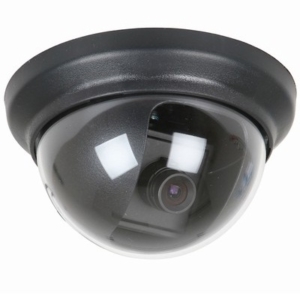
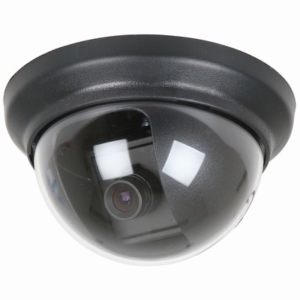
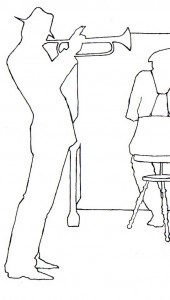
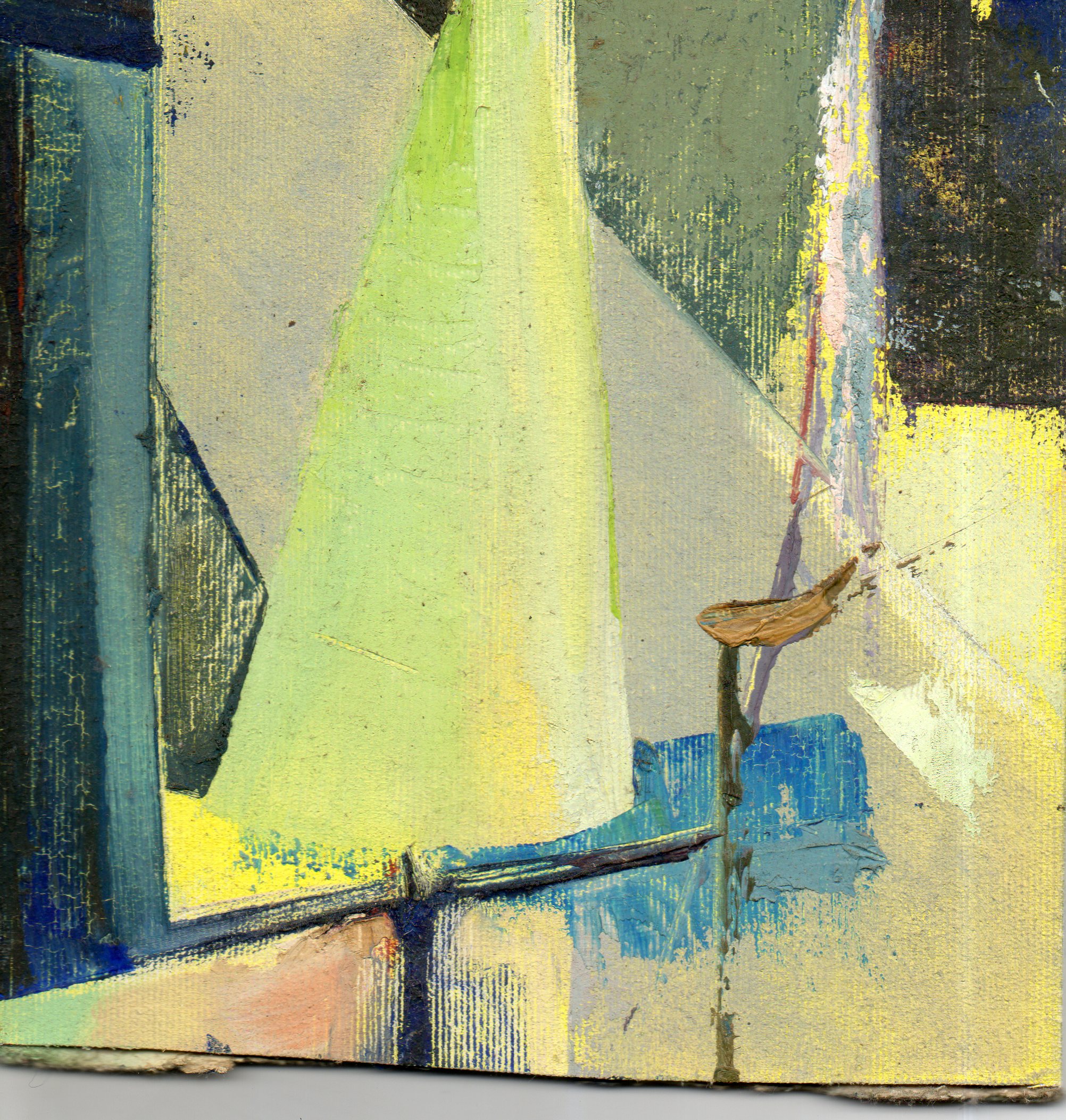
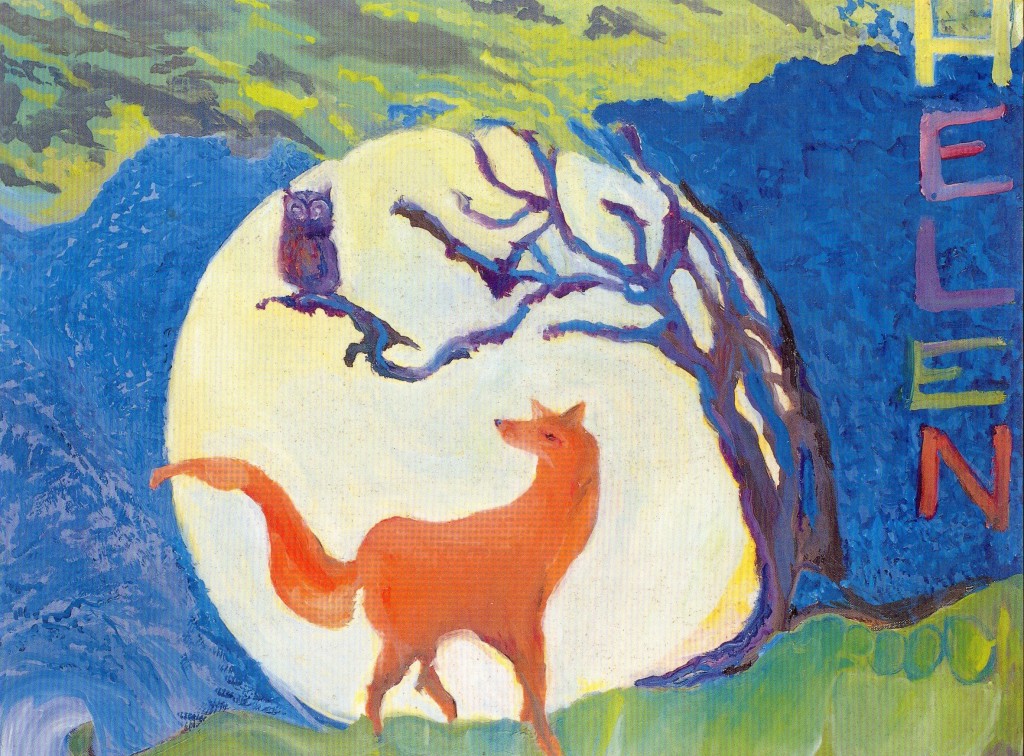
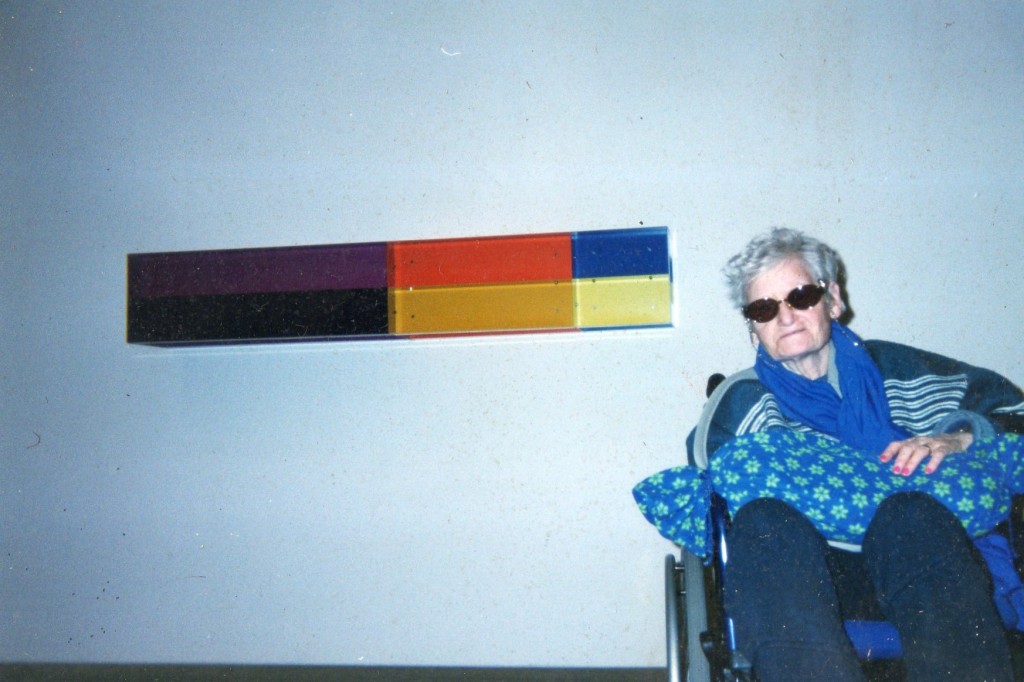
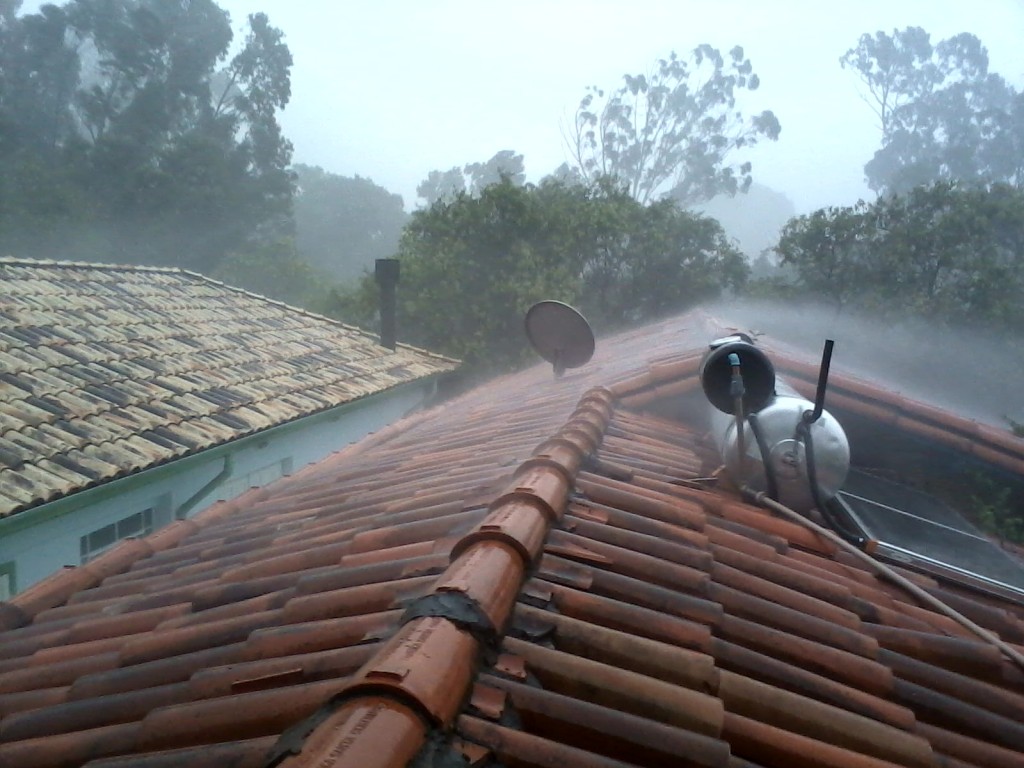
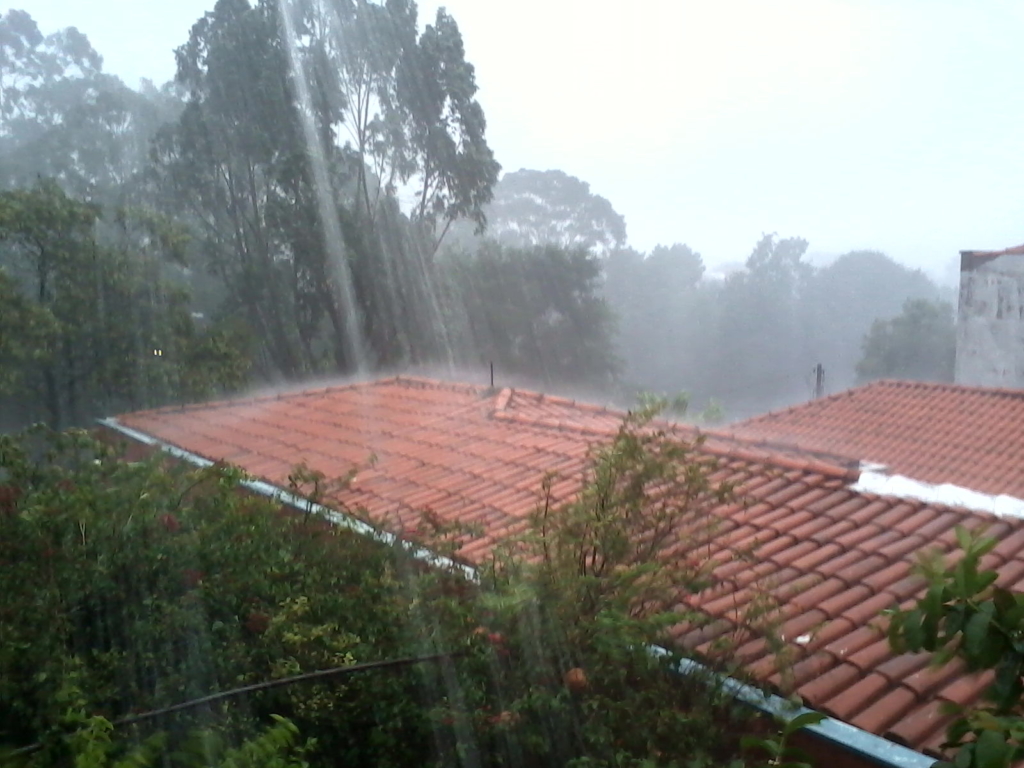
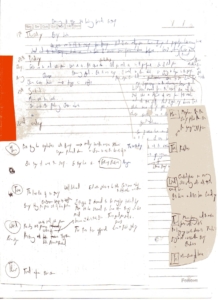
![A Waste of Good Paper plan [1]](https://www.seantaylorstories.com/wp-content/uploads/2012/05/A-Waste-of-Good-Paper-plan-11-218x300.jpg)
